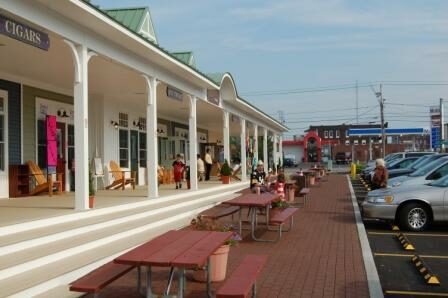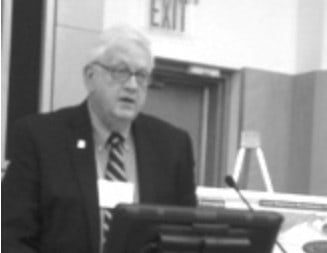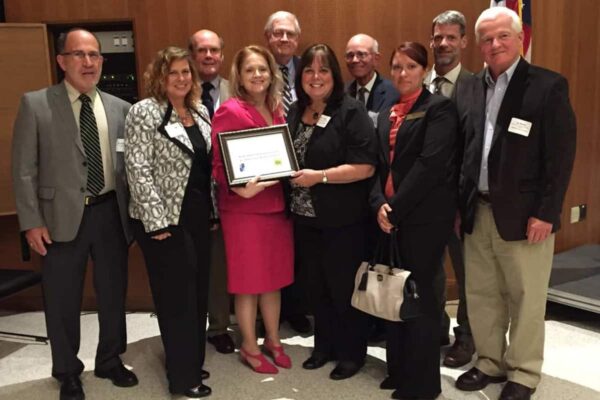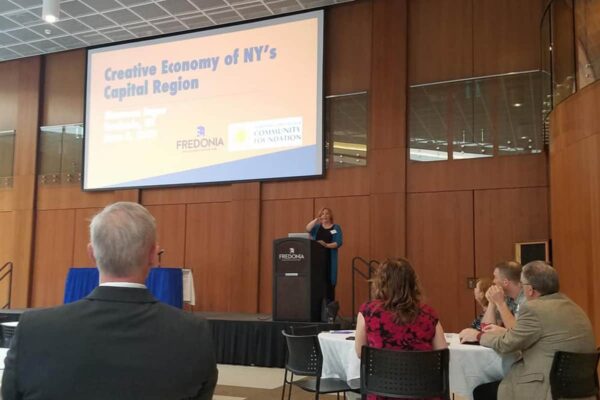By Thomas C. England

LED Center
Why does ME&A specialize in developing and implementing programs in Regional and Local Economic Development (LED)?
ME&A specializes in LED because finding the answers for sustainable development of underdeveloped or developing nations and peoples requires a thorough understanding of the impediments to and potentials for economic development, so that creative solutions can be designed and delivered. LED is an important, perhaps the most important, key to sustainable growth, the reduction of poverty, the elevation of indices of well being of a people and society.
Focusing on local economies in development work is crucial because local economies are the only “true” economies. In contrast, a national economy is a macroeconomic generalization, defined as the sum of a nation’s production of goods and services, that is a useful one for purposes of public policy development, measurement, and to design economic interventions. But changes in national economies only happen as the economies of cities and their regions change.
How do you define economic development and LED?
Jane Jacobs, the venerable urbanist and economist says that development is “significant qualitative change.” Economic development then is qualitative change in the economy.
LED is the process by which public, business and non-governmental sector partners work collectively to create better economic conditions for a locality and its region. The objectives of the LED process can be economic growth, business creation, employment generation, or combinations thereof. The key to the process is the public-private partnership between local governments, private businesses, business associations, NGOs, and other stakeholders.
ME&A worked with municipalities in the Kharkiv Region of Ukraine to develop LED strategic plans and implement business extension services.
Who makes local economic development happen?
In a market economy, the engines of economic development are primarily private businesses that create wealth and jobs. But the private sector cannot succeed without favorable business conditions in which to thrive and grow. Local governments and other public sector actors have a major role to play in helping to establish and maintain those favorable business conditions so that firms in the city’s region can compete successfully with firms from other regions.
What are some other advantages of a focus on LED?
- LED fosters efforts towards decentralization, and is antithetical to government centralization.
- LED supports civil society development. LED is a tangible process through which local government, private businesses and their interests, NGOs, labor interests and private citizens can work together collectively to develop their economic environment
- LED supports democracy building because it places mayors and other locally elected officials at the center of economic development policy-making for the community, where they belong.
- LED relates to community development programming and essentially all development programs related to infrastructure, public facility and social program delivery. All either contribute to or are affected by the local economy.
Why specialize in LED?
ME&A specializes in LED because finding the answers for sustainable development of underdeveloped or developing nations and peoples requires a thorough understanding of the impediments to and potentials for economic development, so that creative solutions can be designed and delivered. LED is an important – perhaps the most important – key to sustainable development.
What are successful approaches to LED?
For a locality or region that is new to LED, the first steps concern organization (who is involved and how is it staffed). This is followed by completion of a community or regional profile and competitiveness (SWOT [strengths, weaknesses, opportunities, and threats] analysis) assessment; development of an LED strategy; implementing that strategy; and finally, a monitoring and evaluation system for continual feedback on the effectiveness of the strategy so that corrections to it can be made as it unfolds. Emphasis is always on making the process a participatory one, led by all significant stakeholders in the community or region.
Training is an important ingredient in the initial phase of assistance, so that key persons and institutions fully understand the concept and process as well as their particular role and the roles of other stakeholders. Organizational development is often key, which includes a review of alternative models for LED organization and selection of the one that best meets community needs. Hands-on assistance follows to facilitate the assessment phase and based on the results, implementation of the strategy. Direct financing is also particularly important to local organizations engaged in the process. Different financial models can be employed based on local circumstances.
What are LED tools and methodologies?
There are a number of tools and methodologies to assess, design, develop, implement, monitor, and evaluate LED programs. These include:
- Stakeholder analysis
- SWOT analysis
- Regional profiling
- Organizational analysis and development utilizing Human and Institutional Capacity Development (HICD) Human Performance Technology methodologies for performance improvement
- Competitive analysis
- Cluster development guidelines
- Cluster committee work sheets
- Cluster assessment guidelines
- LED evaluation survey questionnaires
ME&A worked with Albania, Macedonia, Bulgaria, and Kosovo to prepare their local economies for taking advantage of new business opportunities associated with highway, rail, and pipeline links.
What books, manuals, papers and other resources can you read to learn more about LED?
- Alibasic, Haris, “Sustainability and Resilience Planning for Local Governments: The Quadruple Bottom Line Strategy” (2018)
- Belton, Hugh, “Becoming an Entrepreneur: A Handbook for Assessing Business Opportunity” (1996). An ME&A manual for business development
- Blair, John P., “Local Economic Development—Analysis & Practice”, Sage Publications (1995)
- Dalio, Ray, “The Changing World Order: Why Nations Succeed and Fail” (2021)
- England, Thomas C., “Strategies for Creating Public Private Partnerships for Local Government—The Role of the Mayor (1990). Presentation at the 4th Great Cities of Americas Conference, Buenos Aires
- Fairbanks, Michael, and Lindsay, Stace, “Plowing the Sea: Nurturing the Hidden Resources of Growth in the Developing World,” Harvard University Press (1997)
- Fallows, James and Deborah, “Our Towns” (2018)
- Garner, Jay and Patten, Ross, “Economic Development (Is Still) Not for Amateurs” (2020)
- Gonzalez III, Joaquin; Kemp, Roger L.; Rosenthal, Jonathan (editors), “Small Town Economic Development: Reports on Growth Strategies in Practice” (2017)
- Gundling, Ernest; Williams, Cheryl, “Inclusive Leadership, Global Impact” (2021)
- ICMA, “Building Citizen Involvement—Strategies for Local Government” (1995). A training handbook
- Jacobs, Jane “The Nature of Economies,” Random House (2000)
- Jacobs, Jane, “Cities and the Wealth of Nations,” Random House (1984)
- Jacobs, Jane, “The Economy of Cities,” Random House (1969)
- Kemp, Roger L., (editor), “Strategic Planning in Local Government—A Case Book,” American Planning Association (1992)
- National Council for Urban Economic Development, “An Introduction to the Economic Development Process,” (1980)
- Nichols, J. Hugh, “A Strategic Economic Development Planning Process for Local Government in Albania,” USAID Project (1996)
- Peirce, Neal R., “CITISTATES—How Urban America Can Prosper In A Competitive World,” Seven Locks Press (1993)
- Porter, Michael E., “Competitive Strategy: Techniques for Analyzing Industries and Competitors,” Free Press (1998)
- Porter, Michael E., “The Competitive Advantage of Nations,” Free Press (1998)
- Rusk, David, “Cities Without Suburbs,” Woodrow Wilson Center Press (1993)
- Spratt, Steven, “Development Finance: Debates, Dogmas & New Directions“ (2009)
- Stimson, Robert; Stough, Roger; Roberts, Brian, “Regional Economic Development: Analysis and Planning Strategy” (2018)
- Temali, Mihailo, “The Community Economic Development Handbook: Strategies and Tools to Revitalize your Neighborhood” (2002)
- The Urban Institute, “The Community Builder’s Handbook,” Urban Land Institute (2000)
- Timmons, Jeffrey, with Smollen and Dingee, “New Venture Creation: Entrepreneurship In The 1990’s,” Irwin (1985)
- Urban Development Unit, The World Bank, “Local Economic Development: LED– Quick Reference,” The World Bank (2002)
- Wade, Neal; Smith, Dr. William, “Agents of Economic Development: An Essential Guide for Navigating Good, Bad and Uncertain Times” (2020)
ME&A has been assisting northern Chautauqua communities in western New York with LED strategies to develop business growth and job creation for more than a decade.
Our LED experience
- Northern Chautauqua Regional LED Project. A current regional economic development initiative for a 40-mile region of Lake Erie waterfront and watershed in Western New York. The project provides assistance to the Northern Chautauqua Community Foundation, consisting of economic regional definition, association institutional development (HICD), regional economic development strategic plan development, regional profile and competitive analysis, business cluster identification and prioritization, stakeholder identification and outreach, monitoring and evaluation.
- Albanian Local Government Development. As part of the USAID-funded Public Administration Program for Albania (PAPA) project, pilot cities were assisted in the creation of LED commissions, LED strategic plans were designed and implemented, and capital improvement plans where completed in support of LED strategies.
- Poland “Fabrykat 2000” Project. Under “Fabrykat 2000,” ME&A assisted in the creation of technology transfer programs and the development of technology transfer institutions in Warsaw, Krakow, Lodz and other cities. Emphasis was placed on manufacturing extension with the purpose of helping Polish firms develop their international competitiveness as they approach EU accession.
- Macedonia and Albania LED: ME&A trained local government officials and members of the private sector in entrepreneurship, business management and LED on behalf of the Albanian American Trade & Development Association.
- Ukraine LED: ME&A worked with municipalities in the Kharkiv Region to develop LED strategic plans and implement business extension services. An industrial sector study was also completed and a report issued for use by public and private interests in making investment decisions (these sector studies are available elsewhere on this website).
- Moldova Public Awareness Campaign: ME&A implemented a nationwide public awareness campaign on behalf of the Ministry of Privatization so that citizens understood the privatization process, fundamentals of a market economy, and the rights and responsibilities of private company ownership.
- “Local Economic Development Along Transportation Corridor VIII” project, a Trans-Balkan initiative involving Albania, Macedonia, Bulgaria and Kosovo. ME&A worked with Balkan countries to prepare their local economies for taking advantage of anticipated new business opportunity associated with highway, rail and pipeline links. Project elements included network development, advocacy, LED, and cross-border project development among network partners.
- Macedonia Competitiveness Activity. ME&A identified key industrial clusters for further development of an internationally competitive economy for the country.

Thomas C. England, ME&A’s Chief for Strategy and Innovation, has more than 40 years of experience in policy and management positions in both the public and private sector with specific expertise in international development programs. He is one of ME&A’s co-founders and served as CEO and President, and as Chairman of the Board of Directors, for more than 30 years. He has also served on the Executive Advisory Board of the Professional Services Council (PSC) Council of International Development Companies.









